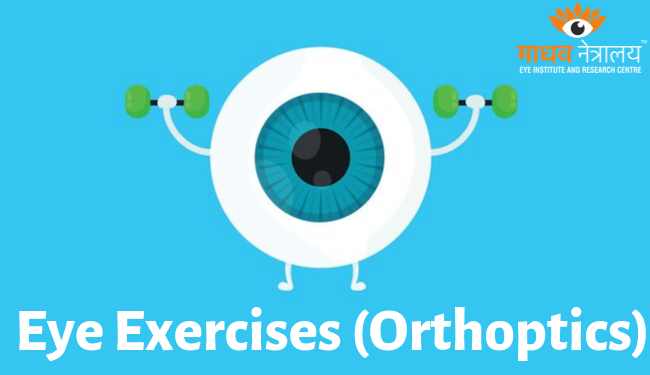WHAT ARE ORTHOPTICS?

ORTHOPTICS can be defined as the evaluation and treatment of disorders of binocular vision. Clinical and scientific methods are utilized to treat poor coordination or misalignment of the two eyes. These methods often include eye exercises. Eye exercises have also been called "vision therapy" by some optometrists.
WHEN ARE EYE EXERCISES (ORTHOPTIC TREATMENT) HELPFUL?
ORTHOPTIC (eye) exercises can be used in the treatment of problems of binocular vision (use of the two eyes together) or misalignment of the eyes.
Treatment of any of the following conditions may include eye exercises and other orthoptic methods:
(I) Inability to focus with both eyes comfortably within the normal reading range (convergence weakness or insufficiency).
(2) One eye drifting outward occasionally (intermittent exodeviation).
(3) One eye drifting inward intermittently, often when attempting to focus on small or close objects (intermittent esodeviation).
(4) When recognition of double vision and use of the eyes together are needed prior to surgery to straighten the eyes.
(5) After surgery when better control is needed to keep the eyes straight.
(6) STRABISMUS (misalignment of the eyes), also known as squint, lazy eye, crossed-eye, wall eye, wandering eye. The misalignment may be constant, intermittent, or hidden.
(7) AMBLYOPIA (an eye with poor vision) or Lazy eye may be caused by strabismus or other factors.
(8) Double Vision is uncommon in children. Although some conditions that cause double vision may be treated with eye exercises, double vision itself does not mean that eye exercises should be given.
WHAT SYMPTOMS CAN BE CAUSED BY ABNORMAL BINOCULAR VISION?
Patients with the binocular problems described above may complain of any of the following symptoms: eyestrain, blurring of vision in one or both eyes, double vision, difficulty focusing, a pulling feeling, a sensation that one eye is doing all the work, a feeling that one eye is trying to drift, ocular discomfort, headaches, brow ache, increased sensitivity to bright light, losing place or skipping lines when reading, tired eyes after short periods of reading, or heavy eyelids. Any or all of these symptoms may worsen after using the eyes.
ARE THESE SYMPTOMS ALWAYS CAUSED BY BINOCULAR EYE PROBLEMS?
These symptoms may be caused by many other conditions, in some cases not even related to the eyes. They do not necessarily indicate what is causing the problem. The correct diagnosis must first be made before eye exercises are prescribed.
HOW IS ORTHOPTIC THERAPY PLANNED?
A "team approach" is used in planning therapy. Orthoptic investigation and orthoptic exercises are usually carried out by a certified orthoptist. Agreement is reached between the ophthalmologist and orthoptist concerning the patient's symptoms, diagnosis, and best treatment plan. In most situations, the exact details of treatment are usually left to the discretion of the orthoptist. Some ophthalmologists will teach basic exercises themselves. In some settings, similar orthoptic therapy may be performed by an optometrist. Some optometrists advocate "vision training" which is not considered to be eye exercises or orthoptic training by the definitions used here.
WHAT DOES ORTHOPTIC TREATMENT INVOLVE?
A course of orthoptic treatment generally will be spread out over several months and involve between six and eight treatment sessions. Simple exercises are prescribed by the orthoptist in the office and performed by the patient at home. The orthoptist evaluates the patient's progress and modifies the exercises as needed. A course of treatment is relatively inexpensive.
Methods of treatment vary and are modified according to the patient's age, co-operations, eye problem, and stage of treatment. Exercises are designed to improve or correct the convergence, accommodation and fusional (focusing) mechanisms and improve or restore binocular control. These exercises are often supplemented by other methods, including patching, lenses, or prisms.
ARE EYE EXERCISES BENEFICIAL?
Yes, eye exercises can be of great benefit to the patient provided the condition from which the patient suffers is recognized and diagnosed as a binocular eye problem. Certain eye conditions are only treatable by these methods. Cooperation is necessary between the patient, parent (if a child is being treated), ophthalmologist, and orthoptist to establish permanent improvement.